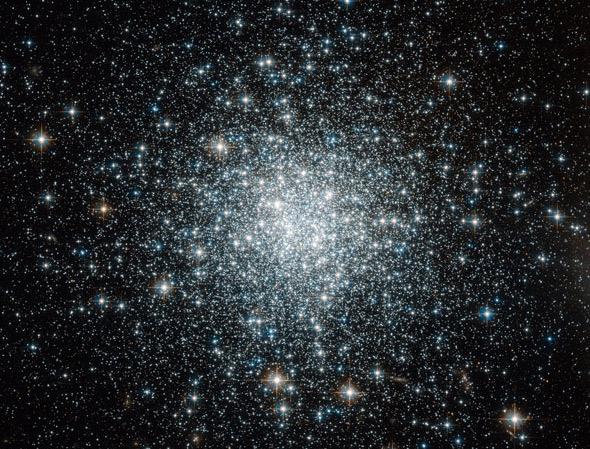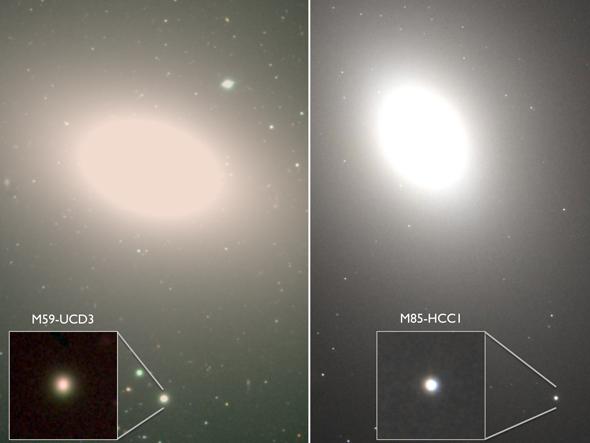I think one of the most interesting facts in astronomy is a simple one to state: Galaxies are cannibals. They eat each other.
The Milky Way grew huge this way; our galaxy is in the top tier of spirals in the Universe. (Many are bigger, but the vast majority are far smaller.) It got that way by colliding and merging with smaller galaxies, enlarging its ranks over time. It’s actually in the process of eating several dwarf galaxies right now. Like, literally, at this very moment.
But what of these smaller galaxies? What happens to them?
Some merge completely with the bigger galaxy, a completely digestible meal. But sometimes parts of the smaller galaxy survive. If the center is compact and dense enough, it can make it through the ordeal.
We’ve seen these here and there, but now astronomers have found a new class of such objects: Ultra Compact Dwarfs, or UCDs. And it turns out they’ve been hiding in plain sight.
These galaxies are small and luminous, and incredibly dense with stars. Through ground-based telescopes they’re so small they look like foreground stars, and through Hubble their dense nature but slightly visible fuzzy halos that make them look like distant galaxies. That’s how they avoided discovery for so long: They slipped between the cracks.
These objects are the densest galaxies known. Our Milky Way has hundreds of billions of stars, but they’re spread out over a hundred thousand light-years. One of the new UCDs just discovered has far fewer stars—something like 10 million—but it’s only about 20 light-years across!

Phto by ESA/Hubble & NASA
That’s really weird. I mean, really weird. It has the size of a typical globular cluster (a spherical cluster containing a hundred thousand stars or so) but is a hundred times denser!
Another UCD found is less extreme but still pretty amazing: It’s about 200 light-years across and has a hundred million stars in it. That’s far larger than a globular cluster, with a lot more stars.
It’s their incredibly compact nature that helped them survive being a galactic snack. This video should help make that clear:
The small galaxy is in a tight orbit around the center of a much larger galaxy. Tides from the big galaxy strip the outer stars off the smaller one; in a sense the gravity they feel from the bigger galaxy is larger, so they get peeled away from the smaller one. Stars closer in to the center of the small galaxy are more tightly bound, and stay together.
After a few passes all the outer stars are ripped away, and what’s left is just the compact nucleus of the smaller galaxy: an ultra compact dwarf. In fact, spectra taken of the UCDs show they resemble the cores of galaxies.
You’d expect to find these objects near bigger galaxies, and sure enough both of the new objects are physically close to much beefier galaxies. Note only that the larger galaxies show signs of recent disturbances (basically, weird overall shapes) indicating they recently underwent a collision and merger.
This work is impressive. It’s not often you find a new kind of astronomical object, especially when examples of them are sitting right in images that have been around for years. But their borderline nature between star clusters and proper galaxies effectively hid them.
I’ve long said that we have to be careful and not let our prejudices blind us to objects that are neither one thing or another (cough cough Pluto cough). In this case, I’m glad this team was able to see these UCDs for what they are.
And I have to add: The astronomers who found them were undergrads, students at San José State University! They combed through archived data taken by several different telescopes to identify potential ultra compact galaxies, then followed up using observations to nail down their characteristics. It’s quite an accomplishment!
And a reminder to not always dismiss something just because it conforms to your own predisposed beliefs. Look around you! What are you missing?
